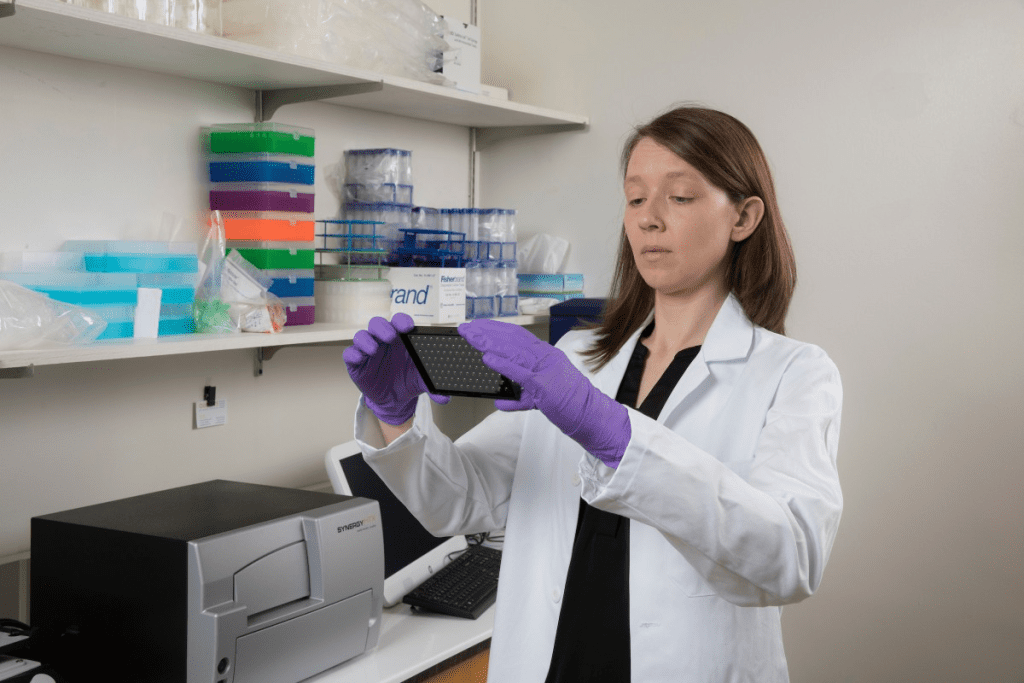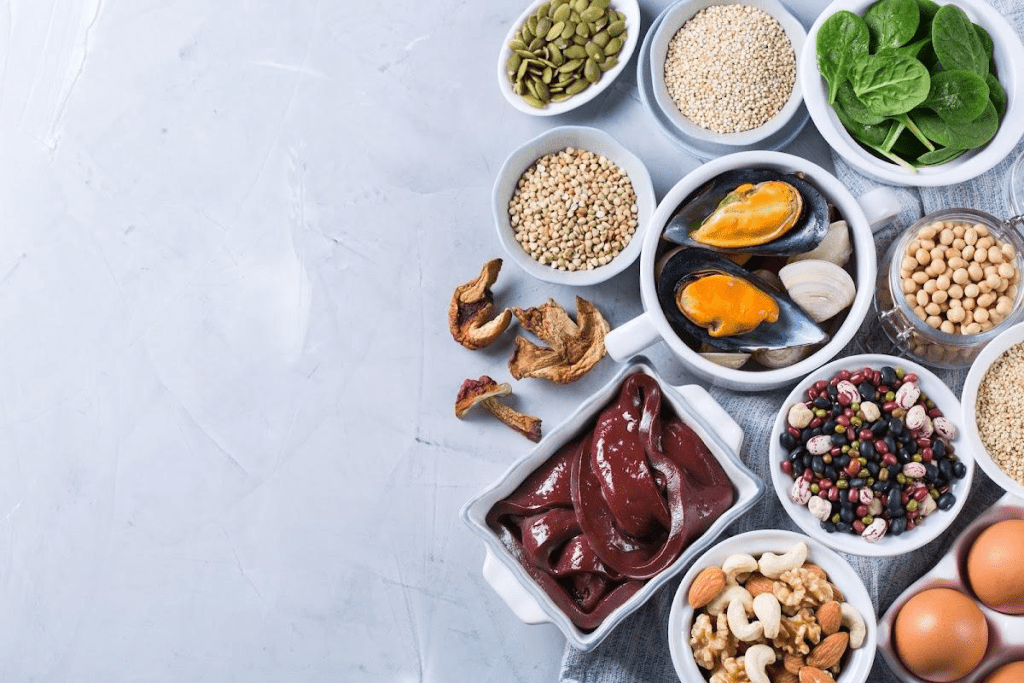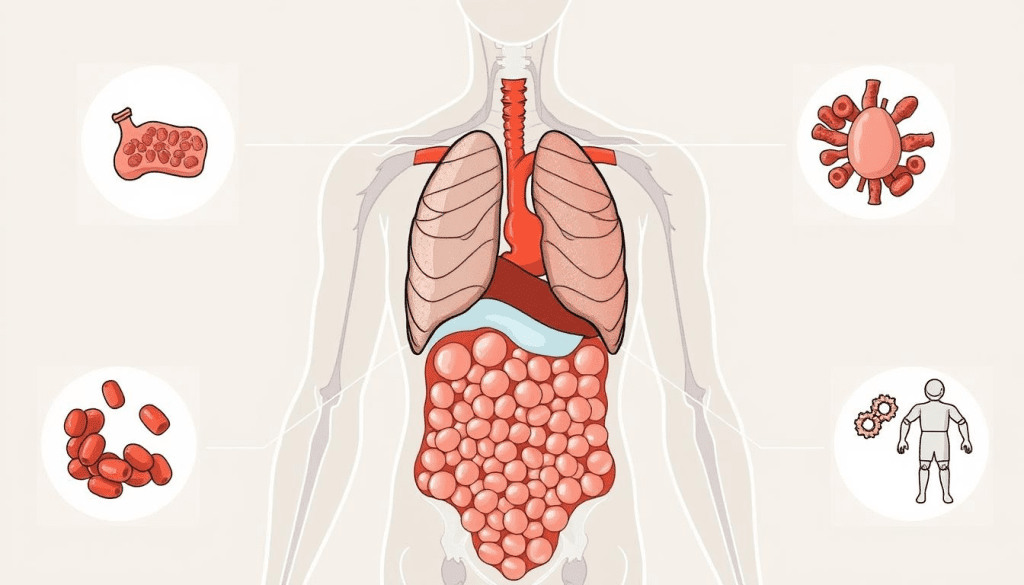Last Updated on November 13, 2025 by
Iron deficiency is a big problem for kids, hitting up to 40-50% of those under five in poor countries. Iron is key to making red blood cells. Without enough, kids can feel tired, have trouble thinking clearly, and grow more slowly.

It’s vital to catch this early to avoid lasting health problems. Doctors often suggest iron supplements to help. These supplements make sure kids get the iron they need to grow strong and healthy.
Globally, iron deficiency in children is a big public health issue. It affects kids’ health and has a big impact on society and the economy.

Iron deficiency is the most common nutritional disorder globally. Up to 40-50% of children under 5 in poor countries have it. It’s also seen in rich countries, but less often.
Iron deficiency varies a lot among different groups. For example, in Turkey, many kids and teens have it. This shows we need special nutrition help for them.
In poor countries, iron deficiency is worse. This is because of less access to iron-rich foods, poor healthcare, and economic struggles. It’s also made worse by bad diets and not enough care for moms before they have kids.
Key factors contributing to iron deficiency in developing countries include:
Iron deficiency varies by region. It’s affected by diet, money status, and healthcare access. Places with more poverty and less healthcare have more iron deficiency in kids.
Risk factors for iron deficiency include:
Knowing these differences and risks helps us fight iron deficiency in kids all over the world.
Iron is key for our bodies, more so for kids. It helps with many body functions. This makes it vital for healthy growth and development.
Iron helps make red blood cells. These cells carry oxygen around the body. This is important for energy and growth in kids. Iron’s main roles include:

The amount of iron needed changes with age. Kids need to get the right amount. Here are the daily iron needs for different ages:
Parents and caregivers should know these amounts. This helps ensure kids get enough iron from food or supplements.
It’s important for parents to know the signs of iron deficiency in kids. This condition can show up in different ways. Spotting these signs early can help get the right treatment fast.
Iron deficiency can cause noticeable physical symptoms. One key sign is pale skin due to less hemoglobin. Kids might also feel fatigued and weak, making it hard to play or do usual activities.
In some cases, a rapid heartbeat can occur. This is because the heart works harder to get oxygen to the body’s tissues.
There are unusual signs of iron deficiency that parents might miss. These include:
Knowing these unusual signs can help parents catch iron deficiency early. This ensures their child gets the right treatment to avoid long-term problems.
Infants and toddlers are very sensitive to iron deficiency. This can harm their brain growth and affect their development. Iron is key to healthy brain development.
Iron deficiency can cause developmental delays in these young ones. It can slow down their progress in many areas. “Iron is vital for making hemoglobin,” a top pediatrician explains. “Hemoglobin carries oxygen to the brain and other parts of the body.”
Without enough iron, babies might not reach important milestones on time. They might have trouble with talking, moving, and social skills.
Some signs of developmental delays include:
Iron deficiency can also lead to sleep disturbances and irritability. Studies show iron helps regulate sleep. Without enough, babies and toddlers can get fussy and restless.
“Iron deficiency is linked to more sleep breaks and less quality sleep in infants,” a study found.
Iron deficiency in early years can affect a child’s brain for a long time. Research shows kids with early iron deficiency might have lower IQs and struggle with thinking later on.
It’s very important to catch and treat iron deficiency early. By knowing the risks and acting fast, we can help ensure young children get the iron they need for healthy growth.
Iron deficiency is a big problem for school-aged kids. It affects their health and how well they do in school. We need to know how iron deficiency impacts kids’ growth and happiness.
Iron is key for kids’ brains to work right. Kids without enough iron might find it hard to learn and remember things. This can hurt their academic performance.
Studies show that iron can help kids think better and do better in school.
Iron-deficient kids face many challenges, including:
Iron deficiency can make kids act like they have ADHD. They might be too active or have trouble paying attention. It’s important for kids to get enough iron to help with these problems.
Important points to remember:
Iron deficiency also affects kids’ social and emotional growth. Iron helps make brain chemicals that control mood and behaviour.
Some effects on social and emotional growth include:
By knowing how iron deficiency affects kids, we can help. We can make sure they eat right, take supplements if needed, and watch their growth closely.
Iron is key to a strong immune system. Without enough iron, children can get sick more often. This can lead to serious health problems later on.
Iron helps our immune system work properly. It helps make white blood cells, which fight infections. Without enough iron, kids make fewer white blood cells.
This makes them more likely to get sick. Studies show iron deficiency weakens the immune system. This makes kids more prone to infections, as noted in studies on iron deficiency and immunity.
Iron also keeps the body’s lining strong. Without it, germs can get in more easily. This can cause many kinds of infections. So, it’s important to eat enough iron to keep the body’s defences up.
Iron deficiency can harm the immune system over time. This can cause chronic health issues. These include anemia, poor growth, and even brain problems.
Chronic infections can also cause inflammation. This is linked to many serious health conditions. Parents and caregivers need to watch for signs of iron deficiency. They should make sure kids get enough iron to keep their immune systems strong.
It’s important for kids to eat enough iron to avoid anemia. Iron helps make healthy red blood cells. These cells carry oxygen all over the body.
Introducing iron-rich foods early is key for babies and toddlers. Iron-fortified cereals are a great first food, starting at 6 months. Pureed meats and legumes like lentils and chickpeas are also good. Always talk to a pediatrician about your child’s diet.
School kids need a diet full of iron-rich foods. Red meat, poultry, and fish are top choices. For those who don’t eat meat, beans, lentils, and fortified cereals are good options. Foods high in vitamin C, like citrus fruits, help iron absorption.
Good meal planning is key to getting enough iron. Here are some tips:
Using these tips in meal planning helps prevent iron deficiency. It supports your child’s health and growth.
It’s important for parents and caregivers to know about iron supplements. They help kids with iron deficiency feel better and stay healthy.
Iron supplements are needed when a child’s iron levels are too low. This can happen if they don’t get enough iron from food, need more, or lose blood often. Always talk to a doctor before starting supplements.
Doctors will check iron levels and the child’s health before suggesting supplements. It’s key to follow their advice on dosage and treatment length.
There are many iron supplements out there. They vary in form and purpose. Here are a few:
The right supplement depends on the child’s needs and the doctor’s advice.
Choosing the right iron supplement for a child with anemia is important. Look for one that’s easy to take and works well. Here are some good options:
Iron supplements are key for treating deficiency, but they can cause side effects. These might include stomach upset, constipation, or pain. To reduce these issues, try the following:
Understanding iron supplements helps parents and caregivers support their child’s health.
We are dedicated to top-notch healthcare for international patients. Iron deficiency in kids is a big issue worldwide. It needs quick action to avoid lasting harm to their brains and growth.
Parents and doctors can team up to keep kids healthy. This means eating right, spotting iron deficiency signs, and using supplements if needed. It’s all about prevention.
We stress the importance of prevention, early detection, and treatment for kids with iron deficiency. This helps reduce risks and keeps kids healthy. Our team is here to help families dealing with iron deficiency.
Signs include pale skin, feeling tired, and a fast heartbeat. Shortness of breath is also common. Unusual signs are pica, restless legs, and a poor appetite.
The amount needed changes with age. Infants need 11 mg/day. Toddlers need 7-10 mg/day. School kids need 8-10 mg/day.
Good foods include pureed meats, iron-fortified cereals, and mashed beans. Chicken, beef, lentils, and fortified oatmeal are examples.
Yes, it can. Iron deficiency can make it hard to focus and learn. This can hurt school grades.
Side effects might be stomach upset, constipation, or pain. Taking supplements with food or vitamin C can help.
A balanced diet with iron-rich foods is key. Include red meat, poultry, fish, beans, and fortified cereals.
Yes, there are many types. Ferrous sulphate, ferrous gluconate, and iron polysaccharide complex are some. The right one depends on the child’s needs.
Yes, it can. Without treatment, it may cause lasting problems with thinking and behaviour. It also makes kids more likely to get sick.
Prevention starts with a diet full of iron. Regular health checks and screenings are also important for all kids.
Iron is key to a strong immune system. Without enough, kids are more likely to get sick.
Subscribe to our e-newsletter to stay informed about the latest innovations in the world of health and exclusive offers!